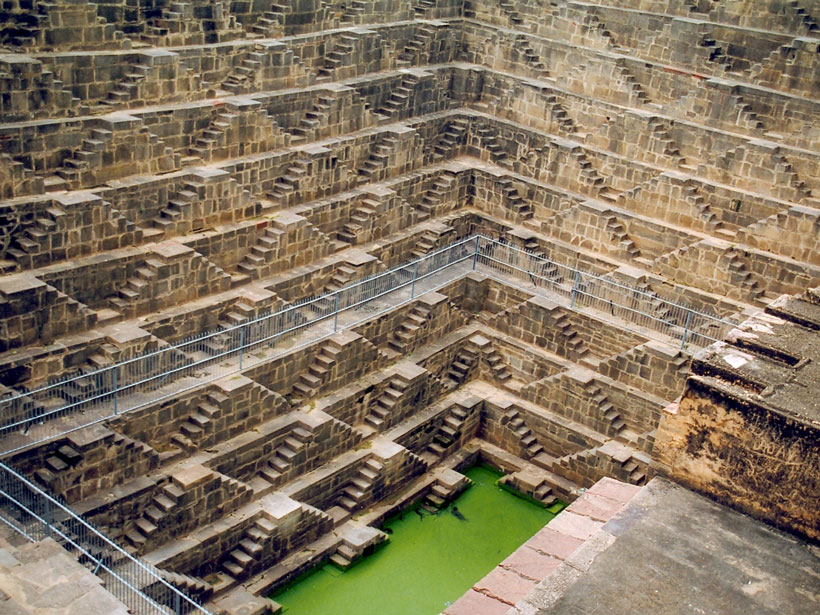Vast regions of India are dry and getting drier. With surface water growing scarce in some areas because of climate change, groundwater extraction for drinking, agriculture, and industry is predicted to increase in the coming years. But a new study shows that India’s groundwater is contaminated by both human-made pollutants and naturally occurring toxic minerals at levels that may be detrimental to human health without treatment.
India extracts 75 billion cubic meters of groundwater annually—about one third of the total groundwater mined globally. In some settings, groundwater is safe for human consumption without treatment, but a new study indicates that’s not the case in some areas of India. Previous studies have focused on individual contaminants such as arsenic, but the co-occurrence of multiple contaminants had not been quantified, says Avner Vengosh, a geochemist at Duke University in Durham, N.C., and an author on the new study, published in Science of the Total Environment.
“Almost none of the wells we investigated are safe for drinking without remediation.”
As part of the Duke University India Initiative, Rachel Coyte, a Ph.D. student at Duke University; Vengosh; and other colleagues sampled groundwater from 243 wells across the northwestern Indian state of Rajasthan, India’s largest state by area. “Rajasthan is a very dry region that’s highly dependent on groundwater for both drinking water and agriculture,” Vengosh says.
Researchers found that over three quarters of the wells were contaminated by uranium, fluoride, and nitrates at levels exceeding World Health Organization drinking water guidelines. Ingesting uranium and fluoride can lead to serious health problems such as kidney disease and brittle bones, respectively, after long-term exposure. Nitrates can trigger acute illnesses, especially in the young, old, and infirm.
“Almost none of the wells we investigated are safe for drinking without remediation,” Vengosh says.
“All of these contaminants could be removed from the water supply with established water treatment protocols,” Vengosh explains. But much of India lacks the infrastructure to treat both wastewater and drinking water, creating a widespread public health crisis. “There are no technological barriers to remediation, but the socioeconomic hurdles can be much harder to overcome.”
Pathways for Contamination
The team also used isotope geochemistry to separate geogenic contaminants that are naturally occurring in the aquifer rocks, such as uranium and fluoride, and those that stem from human-made pollution, such as the high nitrate concentrations that come from untreated sewage and fertilizers leaking into shallow groundwater systems.
“Establishing the pathways of contamination for the various compounds is important for water treatment strategies,” says Richard Wanty, a geochemist with the U.S. Geological Survey in Lakewood, Colo., who was not involved in the new study.
“Natural contamination can be treated at point of use, but it’s generally not possible to fix something like uranium contamination at the source—it’s too pervasive,” he says.
Anthropogenic pollution, on the other hand, can be treated at the source. One such example might be stopping a wastewater plume from getting into groundwater supplies.
More of these kinds of geochemical studies will be needed for India to make progress in providing adequate sanitation and safe drinking water for its growing population of 1.3 billion people, Wanty says.
The study’s methods for vetting groundwater can be applied anywhere in the world that people rely on groundwater, he says.
“This is a very detailed study of a specific geographic area, but one could easily take the geochemical protocols and apply them to other parts of the world, both developed and underdeveloped,” Wanty says. “I hope people don’t refrain from reading this study because it says Rajasthan, India, in the title. This approach can be used anywhere people are using groundwater for drinking water.”
—Mary Caperton Morton (@theblondecoyote), Science Writer
Citation:
Morton, M. C. (2019), Widespread contamination found in northwest India’s groundwater, Eos, 100, https://doi.org/10.1029/2019EO130161. Published on 05 August 2019.
Text © 2019. The authors. CC BY-NC-ND 3.0
Except where otherwise noted, images are subject to copyright. Any reuse without express permission from the copyright owner is prohibited.

